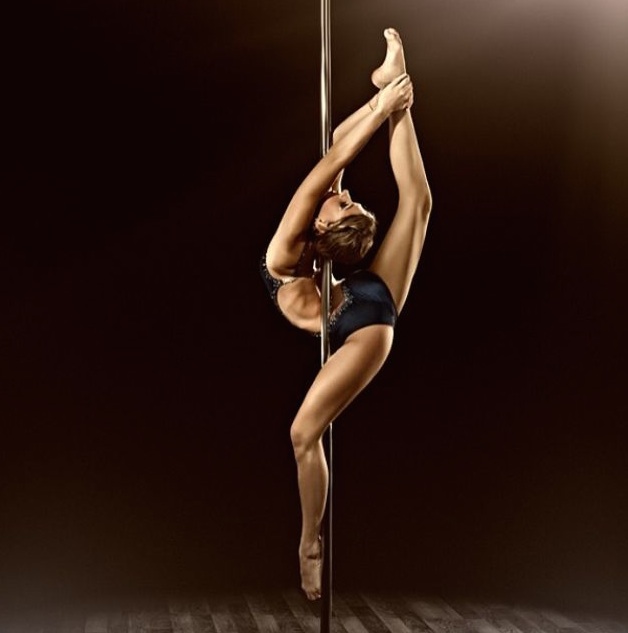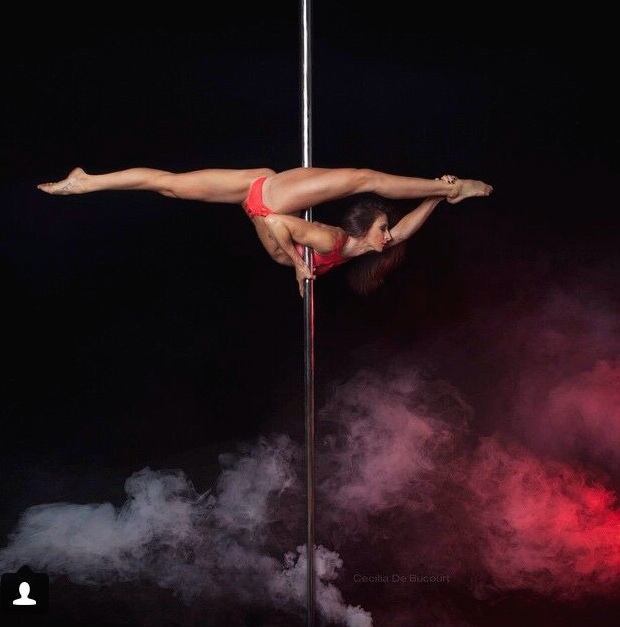
Hollywood Boulevard. Bewitching music playing through the loud-speakers.
Glitter. Sequins. And lots of spandex.
Cut to a pair of shiny steel poles adorning a massive stage while two angel-winged fairies ascend with cotton-candy-pink towels to wipe the apparatuses clean.
What first might seem like preparation for an alluring strip club act is, in reality, the elaborate setup for one of the most unique contemporary displays of aerial artistry and athleticism—competitive pole dancing.
“There is a sense of danger and risk in doing pole as there would be with any extreme athletic sport—the risk of injury and the fear of falling and breaking your face. But without that risk and without that fear, I don't think pole would be nearly as exciting to do or watch,” says pole dancer, Jennifer Fox.
One of the most electrifying pole dancers these days is 2013 California Pole Dance Champion and 2014 National Aerial Pole Art Champion, Sasja Lee.
A professional competitive pole dancer, Lee is the epitome of an athlete in every sense of the word. At 5-foot-4 and 100 pounds of solid muscle, the Jamaican-born beauty is dynamic and captivating to watch.
When she runs her pole “passes,” or string of successive pole tricks, her body levitates effortlessly. She is as strong as an ox, yet light as a feather. She showcases her signature daredevil stunts not many in their right minds would attempt.
Her dexterity is evident in the way she maneuvers precisely from one trick to the next, whether a flying trick around, upside-down, horizontal, or hands-free. It requires a mentally acute mind and body connection, and she places these skills on full display.
When Lee first discovered pole-dancing, she was surprised how quickly she took to it. “Having absolutely no athletic background, I thought, ‘Who does pushups? Who goes to the gym? Why?’ If it’s not an assailant, I’m not running, you know? I just didn’t understand it, so I never thought I’d do this,” she says.
Five years later, Lee has worked her way to the zenith of the sport with her dynamic movement and intricate skill. She is a synthesis of dancer, gymnast, performer, and contortionist.
Overachievers like Lee are attracted to pole-dancing because even at the highest level, pinnacles of success in this sport are elusive. There are always new tricks to conquer and opportunities to be stronger, more flexible, and more innovative. The list goes on.
The reigning champion knows all too well the life of an athlete. She devotes her whole being to a rigorous training schedule that keeps her in the studio four to six hours a day, six to seven days a week, and several months leading up to a competition. Despite the constant voice in her head coaxing her to push past pain or fatigue, she does her best to take care of her body and avoid injury.
Nevertheless, accidents can happen.
Undeterred by a car collision displacing her jaw and requiring 22 stitches two days before the California Dance Championship last year, Lee did not allow it to break her. Instead she found the surge of energy she needed in the midst of the untimely obstacle and walked away victorious.
Besides the physical prowess and agility necessary to become a competitive pole dancer, the artistic aspect involved in the preparation of a routine is a crucial element.
Putting together a piece for a competition begins with a song choice. “I try to think about creating a story with that song. If I feel emotionally connected to something, how can I sort of covey what the song is saying with dance,” says Drusilla Ray, 2014 Pacific Pole Champion. After she has chosen her song, she will then freestyle to the music and discover what comes organically. With the help of gestures and sign language during the creation process, the choreography begins to come alive.
Competitions require four separate pole passes of the dancer’s most ambitious and ground-breaking trick combinations. “Once I’ve gotten a feel for where everything is placed architecturally and compositionally, then I begin figuring out what my pass is going to be like,” she says.

Achieving a high difficulty level does not come overnight, but it is something pole dancers work on progressively.
Established pole champions like Lee and Ray seek to inspire neophyte pole dancers making the leap from the casual workout to the competitive side.
Pole dancers come from a variety of backgrounds, some from previous dance disciplines like Fox. Entering her first competition in March 2015, she has been classically trained in ballet since the age of five.
Even with only seven months of pole-dance experience under her belt, she feels confident about taking her proficiency to the next level. The reason she is compelled to compete is practical. “I realized I was preparing to invest a lot of time into pole-dance, and I wanted something to show for it,” she says. Her movement, musicality, and choreography will work to her advantage in a competition, which are all things judges look for.
On the other end of the spectrum, there are also those women who have had no previous dance training or little athletic background.
Also training for her first competition is Aastha Gaur. Before discovering pole-dancing, Gaur claims she was overweight her entire life. “I have always been a very confident person. I know I am sexy, smart and kind. But I have never been strong. Feeling strong just makes me feel like a badass,” she says.
She proves that with persistence and an allegiance to training, it is possible to reap the benefits. Fortunately she cannot seem to get enough. “I have a very obsessive personality. When I do something, I must go all in,” she says, hence her decision to compete.
She remembers her very first pole class fondly. There is a certain feel to the movement that feels daunting in the beginning. “One only has to try it to know how hard it is to flip your hair without looking like a fool,” Gaur says.
Even Lee admits she almost bailed on her first class. “I went and opened the door to the studio, and there were these women in shorts and heels. Who wears heels to an exercise class? And immediately, I did not want to take the class.”
Bejeweled, skyscraper-high platform stilettos designed to tempt and tease are used in beginner classes to bring out women’s sensual side. However, in a competition piece, they are typically frowned upon. With shoes, a dancer’s lines are lost, a piece that factors in to judging pole competitions.
.jpg)
Judges base their score on a number of elements—musicality, choreography, storyline, difficulty, fluidity, flexibility, and movement. The components are nearly identical to that of competitive ice-skating.
Having a judging panel at a pole competition should be enough to grant this sport validity.
However, even though it has come a long way from its traditional roots, these athletes still fight to earn credibility everyday.
Gaur pays no mind and does what she loves regardless. “Yup, f*** the haters. They will come around when they will come around. The more we act ashamed of pole-dance, the harder it is for society to accept it. Ignore it until society comes around and enjoy your practice,” she says.
Despite the negativity, Lee is confident in her career of choice. “People will warm up to it the more we expose it for what it is.”
“I think it hasn’t gone all the way into the mainstream or accepted into the Olympics yet because there’s still a stigma attached. Even when people see a pole, they’re like, ‘stripper pole!’ But, no, we don’t strip on it. We’re doing everything but that really,” she says.
It is just an apparatus that happens to be vertical after all. In the meantime, while people debate the validity of pole-dancing as an Olympic sport, Lee will continue to train and find new ways of defying gravity.